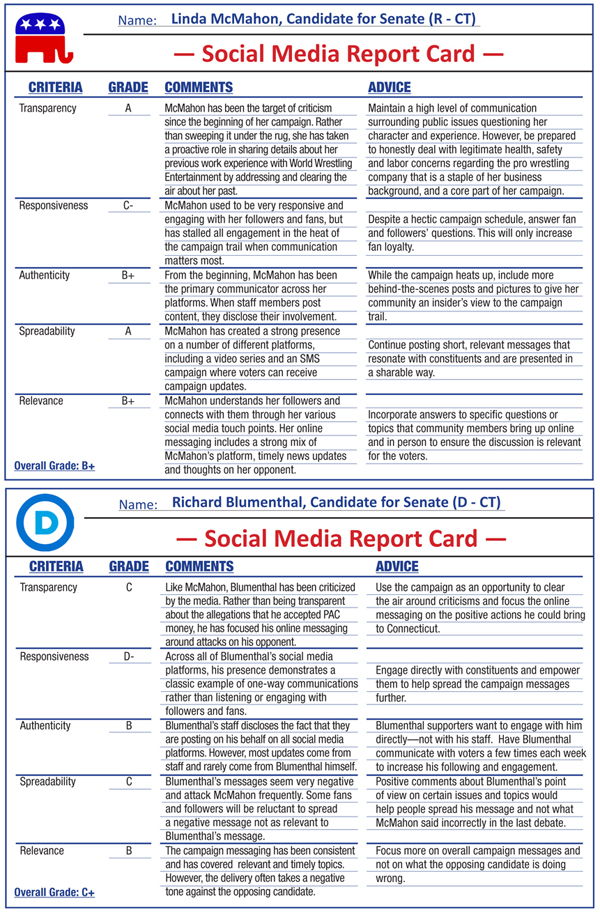Ideal elected officials understand their constituents and represent their community’s best interests. As President Obama demonstrated two years ago, social media provides an avenue where candidates running for office can connect with their audiences, listen to their pleas and demonstrate what improvements they will make in office. When executed well, social media offers an opportunity for candidates to connect with constituents. Managed poorly, social media provides yet another venue where politicians pay lip service to “listening” but are actually disconnected from the experience and concerns of those they serve.
Some candidates have embraced the social media route and used it in an effective way, rallying support from diverse constituents. In Florida, Senate candidate Kendrick Meek has two Twitter profiles (@KendrickMeek and @KendrickMeek_ES)—one in English and one in Spanish—with more than 5,000 followers, thanks to his consistent, active content. While we aren’t convinced two separate accounts was a wise decision, it does show that he is willing to interact with diverse audiences in their native tongues —a move few candidates have taken in the social media space.
Others are using social media to show how deeply their campaign is linked to the concerns of constituents. Lisa Murkowski, the Alaskan Senate candidate, has used social media in support of her write-in campaign by answering questions directly from voters. Her weekly “Ask Lisa” webcasts have covered key timely topics.
In years past, social media was considered a tool to reach younger constituents. In this midterm election, age doesn’t always determine the success of an online outreach program. Take, for example, 77-year-old Republican Senate candidate Chuck Grassley of Iowa. He released a humorous video featuring two senior citizens worrying over the fact that Grassley “has the Twitter,” to which one woman replies, “Oh no! Can it be cured?” Grassley’s efforts have led to 0more than 20,000 views on YouTube and a lead in the polls.
While many candidates are getting it right, others have proved that having a social media presence can lead to more harm than good if not executed correctly. For example, Tea Party darling Christine O’Donnell’s campaign Web site (teamchristine2010.com) features a group chat function, but the look and function of the application is reminiscent of a 1996 AOL chat room. Similarly, California Senate candidate Carly Fiorina missed a huge opportunity when she launched a blog (CarlyforCA.com/blog) that is written entirely by her staff and reads like a press release.
Whether a candidate is young or old, a big spender or a penny-pincher, the success of an online campaign has to do with how best a candidate utilizes the resources available. Are they transparent? Are they responsive to constituent feedback? Are they creating content that their constituents want to share with their networks? If the answers are yes, they will find themselves better positioned going into the polls.
One race that has been particularly interesting to watch is between Senate candidates Linda McMahon and Richard Blumenthal in Connecticut. In our Social Media Report Card, we’ve taken a close look at their race to see who makes the grade. PRN
CONTACT:
Peppercom Strategic Communications, www.peppercom.com.

